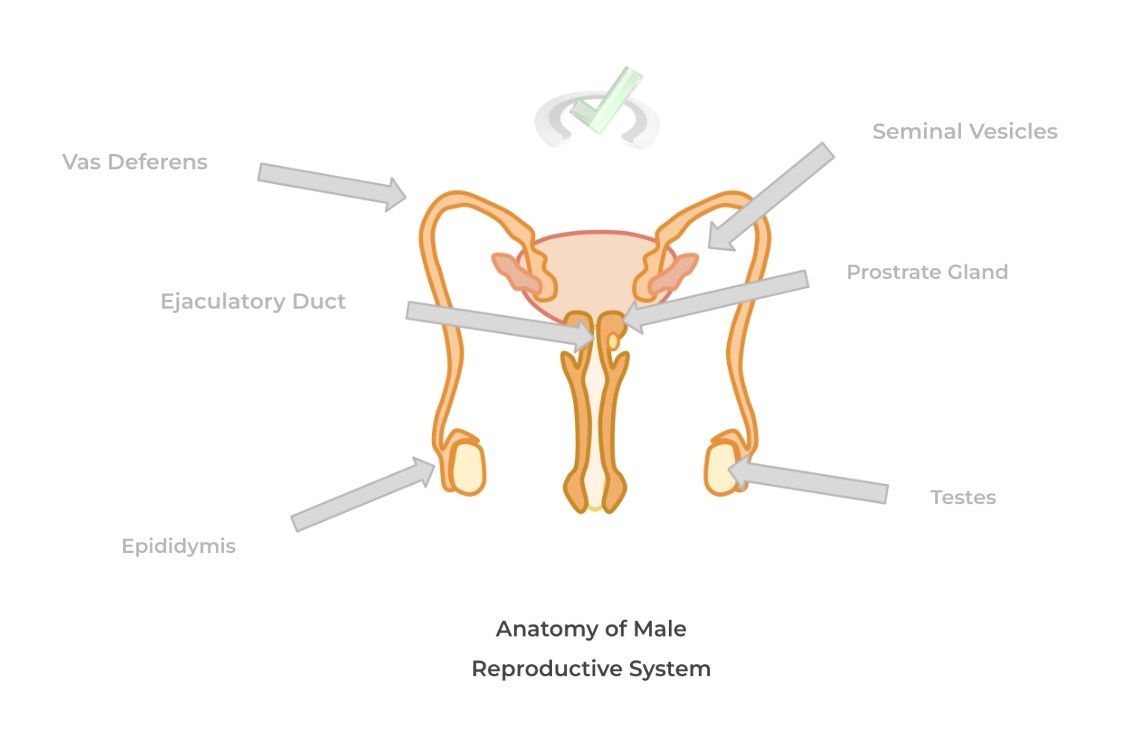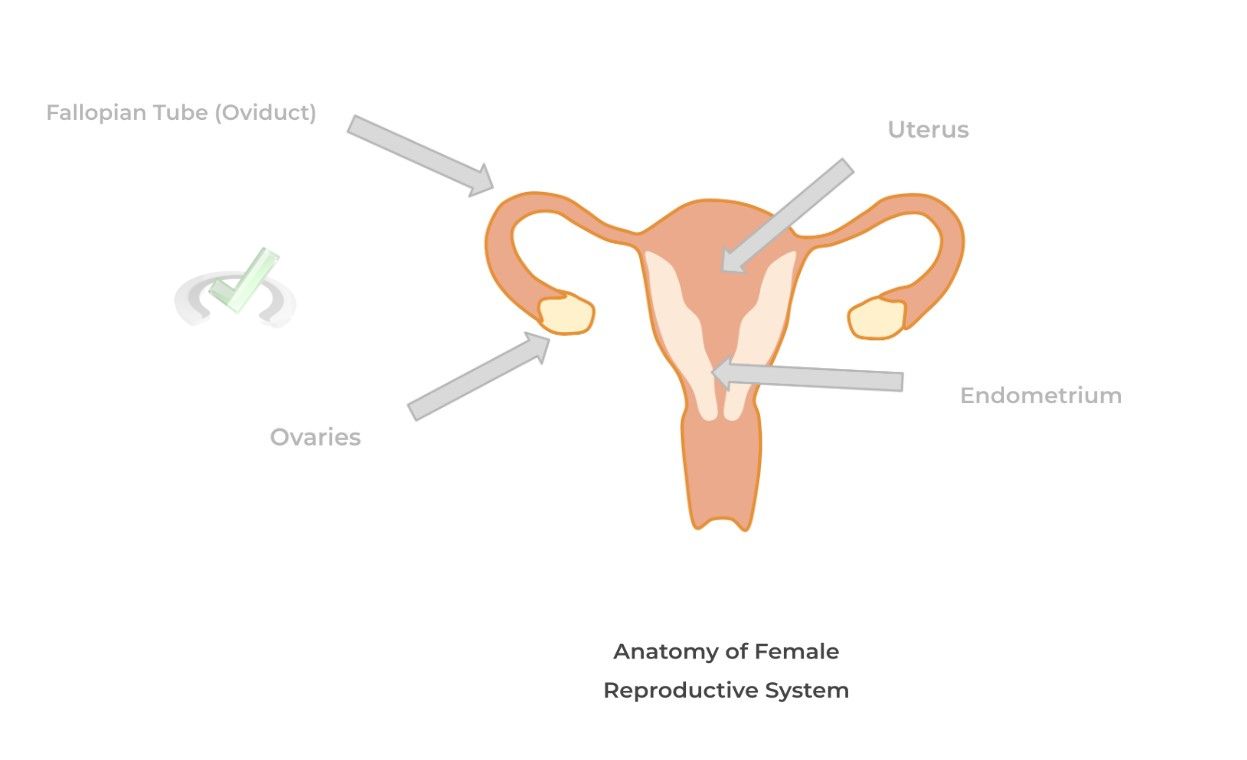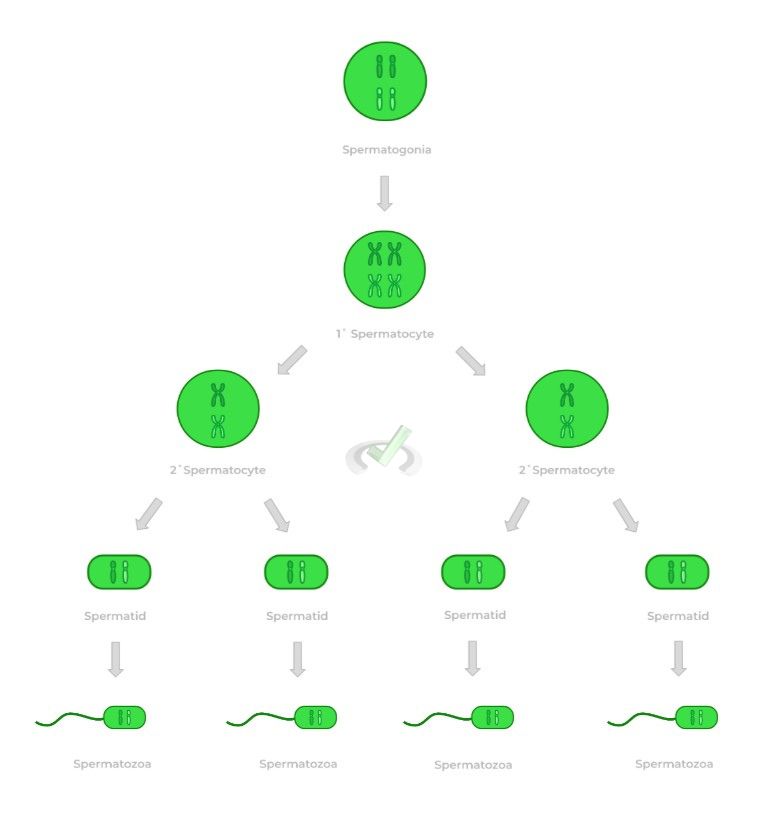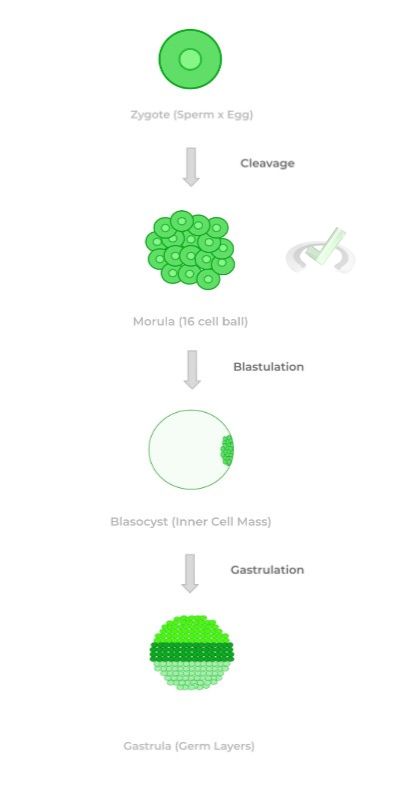While going through this complete guide, you might get some memories of middle school health class (yikess….). Though nowhere near as uncomforting as it was during our pubescent days, we can still learn and marvel at the complex biology of the reproductive system!
While this guide will spare the awkwardness from 7th grade health class, it’ll still cover and go over some of the major elements of reproduction and give you a brief introduction to embryogenesis, covered in more detail in our embryogenesis complete guide!
This chapter overview will introduce the basics of reproduction within the human body, including reproductive structures, processes, etc. Let’s get started!
Reproduction on the MCAT: What You Need to Know
Topics on reproduction will be tested on the biology section of the MCAT and can appear both as passage based and fundamental discrete questions.
Here at MCAT Mastery, we calculate that on average, you can expect about 4 to 6 questions on reproduction appearing on your MCAT exam.
Introductory biology account for 65% of the content covered in the Biological and Biochemical Foundations of Living Systems section (Bio/Biochem), 5% of content tested in the Chemical and Physical Foundations of Biological Systems (Chem/Phys), and 5% of material on the Psychological, Social, and Biological Foundations of Behavior (Psych/Soc).
Important Sub-Topics: Reproduction
When you go through the anatomy of the reproductive system, you’ll see that there’ll be analogous structures between the structures of the male and female reproductive system!
Having these side by side analogies can hopefully help you in remembering and internalizing the functions of the reproductive structures as you can compare them to their opposite gender counterparts!
1. Structure of the Male and Female Reproductive System
While obviously having different structures, the male and female reproductive system share a set of analogous organs called gonads, which are the primary sex organs responsible for the formation of sex cells (gametes).
For males, the primary gonads are called the testes which produce mature sperm cells and testosterone. Specifically, these occur at the seminiferous tubules and Leydig cells, respectively.
After sperm matures and gains mobility at the epididymis, the sperm travels via the vas deferens tube in order to be stored at the ejaculatory duct while awaiting ejaculation, the release of sperm.
In addition to the gonads, there are also other secondary supporting sex structures like the seminal vesicles, which help nourish the sperm cells by providing them with fructose, and the prostate gland, which secretes seminal fluid.
It’s when the seminal fluid and sperm cells combine together that the combination is known as sperm.
The primary gonads of the female reproductive system are the ovaries, which produce mature egg cells as well as the hormones progesterone and estrogen.
During ovulation, which is when egg cells are released from the ovaries, the egg cells will travel to and remain within the fallopian tube (also called oviduct). They remain there until either fertilized by a sperm cell or be released during menstruation if no fertilization occurs.
The uterus will house a fertilized egg and support the development of the fetus throughout pregnancy. This is evident via how the endometrium, the inner lining of the uterine cavity, thickens every menstrual cycle to prepare for a possible pregnancy.
(Coming Soon!) Full Study Notes : Structure of the Male and Female Reproductive System
For more in-depth content review on the anatomy of the male and female reproductive system, check out these detailed lesson notes created by top MCAT scorers.
2. Sperm and Ovum Formation via Gametogenesis
The formation of sperm and ovum, called spermatogenesis and oogenesis, actually results from a familiar cell division process: meiosis! Gametic, sex cells ultimately result from these processes but have a few differences that we’ll cover below.
Spermatogenesis begins with spermatogonia, the somatic diploid cell that will undergo meiosis. Spermatogonia will first differentiate into what are called primary (1˚) spermatocytes which then undergo meiosis I to produce 2 haploid secondary (2˚) spermatocytes.
The 2 secondary spermatocytes will then undergo meiosis II to generate 4 haploid spermatids, which still have to undergo maturation before developing into the mature sperm cells called spermatozoa.

Oogenesis also functions in a similar way where the diploid oogonium undergoes meiosis to generate mature haploid egg cells, called ovum. However, there is a noticeable difference that occurs during meiosis 1 and 2.
When the 1˚and 2˚oocytes undergo meiosis I and II, each division results in what’s called a polar body. This cell contains much less cytoplasm which results in it to be inadequate for further fertilization. Because of this, only 1 mature ovum is produced at the end of oogenesis, as opposed to the 4 gametes produced in spermatogenesis.

(Coming Soon!) Full Study Notes : Ovum and Sperm Formation through Gametogenesis
For more in-depth content review on sperm and ovum formation, check out these detailed lesson notes created by top MCAT scorers.
3. Reproductive Processes
While we have a whole other section dedicated to embryogenesis, we’ll introduce some of the key components and steps. If fertilization occurs, a diploid zygote is formed when the sperm and egg cell fuse together. From here, the zygote enters into a process called cleavage in order to form a 16 cell ball called a morula.
The morula then undergoes blastulation to form the blastocyst, which has an important structure called the inner cell mass, containing the pluripotent stem cells which can differentiate into all the organism’s cells!
Gastrulation of the blastocyst results (to no surprise) in the gastrula which begins to develop the 3 main germ layers: ectoderm, mesoderm, and endoderm.
This is just a brief introduction of the main phases of embryo development, but a good starting point before getting into the finer details!
In addition, the reproductive system also has input from the endocrine system as many hormones are involved with the maintenance of many reproductive functions. These hormones include the gonadotropin releasing hormone (GnRH), luteinizing hormone (LH), and the follicular stimulating hormone (FSH).
(Coming Soon!) Full Study Notes : Reproductive Processes
For more in-depth content review on LH and FSH, along with the estrogen and progesterone, all come together and have important interactions during the menstrual cycle, check out these detailed lesson notes created by top MCAT scorers.
Important Definitions and Key Terms
Below are some high yield definitions and key terms to refer to when reviewing reproduction!
Term | Definition |
|---|---|
Gonads | The primary sex organs which are responsible for gamete formation; these include the male testes and the female ovaries |
Epididymis | Structure in the male reproductive tract where the sperm cells mature and gain mobility |
Vas Deferens | Tube in male reproductive tract which sperm cells use to travel to the ejaculatory duct |
Fallopian Tubes | Also called the oviducts; egg cells will be released into the fallopian tubes to await possible fertilization by a sperm cell |
Uterus | Structure in female reproductive tract which will house a fertilized egg cell for embryonic development |
Spermatogonium |
Diploid, somatic cells which will undergo spermatogenesis to produce haploid, sperm cells |
Oogonium |
Diploid, somatic cells which will undergo oogenesis to produce haploid, egg cells |
Spermatozoa |
Specific term for mature sperm cells |
Ovum |
Specific term for mature egg cell |
Zygote |
A diploid cell formed by the fertilization of an egg cell by a sperm cell |
Inner Cell Mass |
Structure within the blastocyst which contains pluripotent stem cells |
Additional FAQs - Reproduction on the MCAT
Is the Reproductive System on the MCAT?
What do I Need to Know About the Male Reproductive System? – MCAT?
Where Does Fertilization Occur – MCAT?
What Causes Menstruation? – MCAT?
If fertilization does not occur, the thickened uterine lining sheds and the egg cell is released through vaginal bleeding.
Additional Reading Links (Coming Soon!) – Study Notes for Reproduction on the MCAT
Additional Reading: MCAT Biology Topics:
- Cells on the MCAT
- Digestive Systems on the MCAT
- Embryogenesis and Development on the MCAT
- Endocrine Systems on the MCAT
- Excretory Systems on the MCAT
- Genetics and Evolutions on the MCAT
- Immune Systems on the MCAT
- Nervous Systems on the MCAT
- Musculoskeletal Systems on the MCAT
- Cardiovascular Systems on the MCAT
- Respiratory Systems on the MCAT


 To help you achieve your goal MCAT score, we take turns hosting these
To help you achieve your goal MCAT score, we take turns hosting these